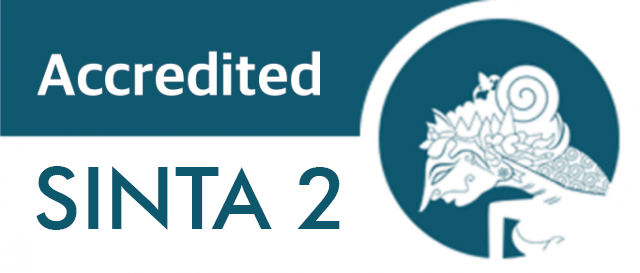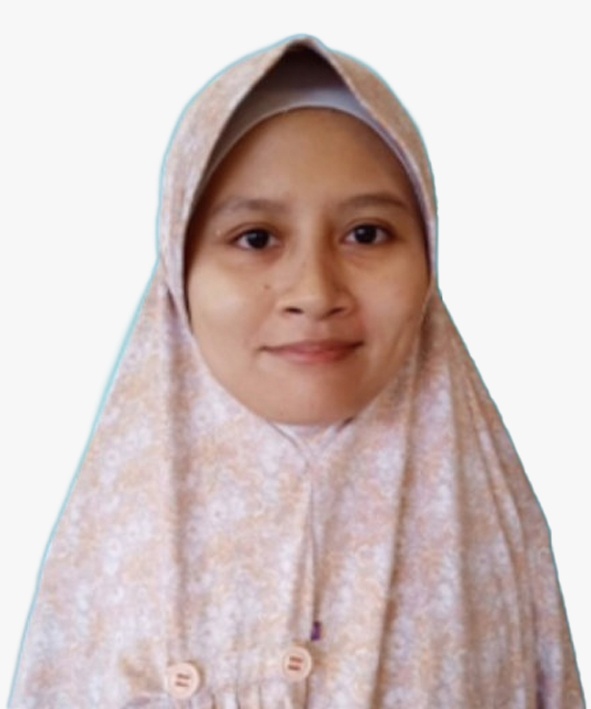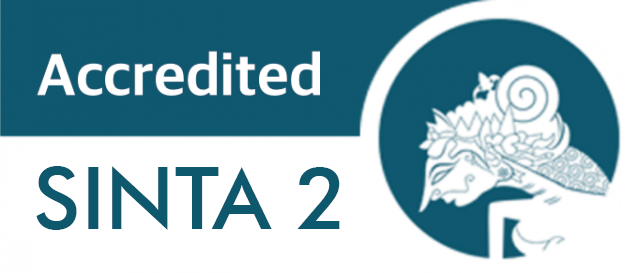Very Late Onset Schizophrenia Like Psychosis: A Case Report
Introduction: With the growth of the aging population, we need to ensure that elderly people can live the rest of their lives with a satisfactory quality of life. However, the occurrence of psychosis in the elderly, especially at a later age, is a risk for decreased quality of life and a high risk of morbidity and mortality. The first episode of psychosis in age 60 or over is called very late-onset schizophrenia-like psychosis (VLOSLP) and needs to be distinguished from secondary psychosis such as Alzheimer’s Disease (AD) with psychotic symptoms. Case: A 77-year-old woman was brought by her family to the geriatric psychiatry clinic due to strange behavior such as hearing voices and obeying the voices’ commands since the last 6 months that worsened in the last month. In the last month, the patient also had sleeping difficulty, pacing at night, and accusing family of trying to harm her. After one month of therapy with Risperidone, the patient was showing improvement in the reduction of the voices. Discussion: The patient was assessed as VLOSLP with the first episode of psychosis with schizophrenia spectrum core symptoms such as paranoid delusion and auditory-verbal hallucination. Conclusion: In this case, clinicians work with insufficient additional examination data, and that could also apply to clinicians in the remote area with no access to more comprehensive modalities to differentiate early stages of AD with psychosis and VLOSLP from clinical symptoms. However, more data is needed to establish clinical criteria regarding VLOSLP.
Introduction
With the growth of the aging population, we need to ensure that elderly people can live the rest of their lives with a good quality of life. However, the occurrence of psychosis in the elderly, especially at a later age, is a risk for decreased quality of life and high risk of morbidity and mortality[1],[2]. In the elderly, the first episode of psychosis at age 60 or over is called very late-onset schizophrenia-like psychosis (VLOSLP) and needs to be distinguished from secondary psychosis, which is frequently associated with organic causes such as Alzheimer’s disease with psychotic symptoms[3],[4]. Misdiagnosis is very likely in early stages since VLOSLP also shows cognitive deficit that can stay as a non-progressive mild cognitive deficit or progress to dementia at a later time[5]. This paper aims to distinguish between VLOSLP and early-stage dementia with psychosis in the case of first-episode psychosis in an elderly woman.
Case
A 77-year-old woman was brought by her family to the geriatric psychiatry clinic due to strange behavior for the last 6 months. The patient’s appearance was quite neat with a blue suit, a white hijab, heeled shoes, and makeup. There was a hindrance to communicating with the patient due to hearing and visual impairment. However, the patient explained that her family had brought her to the clinic to have her body aches examined. She described the body aches as being caused by her trying to defend herself against her niece’s husband, who tried to harm her because he loved her and sometimes forced her to sleep with him, but this should not happen because it was immoral. The patient then said that she did not have any other complaints.
The family said that the patient started to hear voices that other people couldn’t hear in the last 6 months. The voice started as just somebody talking or singing from the mosque speaker and grew more frequent as time went by. The voice began to issue commands that the patient obeyed, such as giving money to a passing child or visiting her neighbors to pray for them. The patient also appeared to be conversing with the voices, but she did not disclose the content to her family. The patient often accused her family of trying to separate her from her boyfriends, who were nonexistent or just strangers. This behavior and hearing voices worsened in the last month before the patient was taken to the clinic, which was also accompanied by sleeping difficulty and often went pacing around in the house at night. When her family asked her to sleep, the patient started to scream, got angry, and accused them of trying to harm her, and she could not be calmed down by her niece. Overall, during all these times, the patient did not show progressive forgetfulness and could still groom and take care of herself independently. Due to the lack of health insurance and financial problems, the family did not agree to additional examination; hence there was no data of laboratory results and brain scans.
The patient did not have a history of hypertension, diabetes, or other chronic disease that required routine medication. The patient at times suffered from gout arthritis but did not take routine medication. The patient had a history of Covid infection with mild symptoms (fever, cough, dyspnea) in mid-2021, around 2 years ago, was not hospitalized, with no history of cloudy consciousness, behavioral change, or agitation during illness, and recovered in around 3 weeks. Neither the patient nor the family had a history of prior psychiatric disorder. Physical examination was within normal limits; psychometry could not be done due to hearing and visual impairment. The patient was assessed as having late-onset schizophrenia and given risperidone 0.25 mg twice a day, and there was improvement in the reduction of the voices after one month of therapy.
Discussion
VLOSLP is a term for the first episode of psychosis with schizophrenia spectrum core symptoms such as paranoid delusion and auditory-verbal hallucination in people over 60 years old and is more common in women[6],[7]. With a prevalence of 0.1–0.5%, VLOSLP can be hard to distinguish from early-stage dementia due to mild cognitive deficits in VLOSLP[8],[9]. It is also said that in some cases, VLOSLP could also progress to dementia, but VLOSLP does not always predict cognitive or functional decline[10]–[12]. Though not yet clear, neurodegenerative process, neuroinflammation, accelerated aging, genetic and sociultural vulnerability are suspected as etiologies of VLOSLP[6],[13],[14]. History of Covid infection in this case might be a contributor that triggers neuroinflammation by activating microglia, causing a chain reaction of neurodegeneration, synaptic pruning dominant in white matter, and inhibiting neurogenesis[6],[15],[16].
In most cases, VLOSLP is classified as a differential diagnosis alongside Alzheimer's Disease (AD) during its early progression stage, which includes psychosis. As clinicians, we need to first differentiate through clinical symptoms; hence we compile specific clinical features that usually represent VLOSLP compared to AD.
| Clinical features | VLOSLP | AD with psychosis |
|---|---|---|
| Sex | More common in women | No difference between men and women |
| Prevalence | <1% of general population | 15–78% of patients |
| Etiology | Neurodegenerative process, neuroinflammation, accelerated aging, genetic and sociocultural vulnerability | Neurodegenerative process |
| Neuroimaging | Most found periventricular white matter hyperintensity | Hippocampal atrophy |
| Misidentification | Rare | Frequent |
| Affective flattening/blunting |
L. Grassi et al., “Quality of life, level of functioning, and its relationship with mental and physical disorders in the elderly: results from the MentDis_ICF65+ study,” Health Qual. Life Outcomes, vol. 18, no. 1, p. 61, Dec. 2020, doi: 10.1186/s12955-020-01310-6.
N. Hoertel et al., “Psychiatric symptoms and quality of life in older adults with schizophrenia spectrum disorder: results from a multicenter study,” Eur. Arch. Psychiatry Clin. Neurosci., vol. 270, no. 6, pp. 673–688, Sep. 2020, doi: 10.1007/s00406-019-01026-9.
K. Kim et al., “Clinical Approaches to Late-Onset Psychosis,” J. Pers. Med., vol. 12, no. 3, p. 381, Mar. 2022, doi: 10.3390/jpm12030381.
H. Kanemoto et al., “Characteristics of very late-onset schizophrenia-like psychosis as prodromal dementia with Lewy bodies: a cross-sectional study,” Alzheimers. Res. Ther., vol. 14, no. 1, p. 137, Sep. 2022, doi: 10.1186/s13195-022-01080-x.
O. Stȩpień-Wyrobiec et al., “Crossroad between current knowledge and new perspective of diagnostic and therapy of late-onset schizophrenia and very late-onset schizophrenia-like psychosis: An update,” Front. Psychiatry, vol. 13, Oct. 2022, doi: 10.3389/fpsyt.2022.1025414.
A. Monji and Y. Mizoguchi, “Neuroinflammation in Late-Onset Schizophrenia: Viewing from the Standpoint of the Microglia Hypothesis,” Neuropsychobiology, vol. 81, no. 2, pp. 98–103, 2022, doi: 10.1159/000517861.
R. R. Tampi, J. Young, R. Hoq, K. Resnick, and D. J. Tampi, “Psychotic disorders in late life: a narrative review,” Ther. Adv. Psychopharmacol., vol. 9, Jan. 2019, doi: 10.1177/2045125319882798.
X. Li et al., “Case report of first-episode psychotic symptoms in a patient with early-onset Alzheimer’s disease,” BMC Psychiatry, vol. 20, no. 1, p. 128, Dec. 2020, doi: 10.1186/s12888-020-02537-9.
U.-M. Louhija, J. Martola, K. Juva, and B. G. Appelberg, “Brain Atrophy in First-Episode Psychosis of the Elderly Is Associated With Cognitive Decline,” Prim. Care Companion CNS Disord., vol. 23, no. 6, Nov. 2021, doi: 10.4088/PCC.20m02865.
J. Stafford, R. Howard, C. Dalman, and J. B. Kirkbride, “The Incidence of Nonaffective, Nonorganic Psychotic Disorders in Older People: A Population-based Cohort Study of 3 Million People in Sweden,” Schizophr. Bull., vol. 45, no. 5, pp. 1152–1160, Sep. 2019, doi: 10.1093/schbul/sby147.
J. Stafford, J. Dykxhoorn, A. Sommerlad, C. Dalman, J. B. Kirkbride, and R. Howard, “Association between risk of dementia and very late-onset schizophrenia-like psychosis: a Swedish population-based cohort study,” Psychol. Med., vol. 53, no. 3, pp. 750–758, Feb. 2023, doi: 10.1017/S0033291721002099.
V. X. Yang, C. C. Sin Fai Lam, and J. P. M. Kane, “Cognitive impairment and development of dementia in very late-onset schizophrenia-like psychosis: a systematic review,” Ir. J. Psychol. Med., vol. 40, no. 4, pp. 616–628, Dec. 2023, doi: 10.1017/ipm.2021.48.
R. Zöllner, A.-F. Hübener, U. Dannlowski, T. Kircher, J. Sommer, and M. Zavorotnyy, “Theta-Burst Stimulation for Auditory-Verbal Hallucination in Very-Late-Onset Schizophrenia-Like Psychosis—A Functional Magnetic Resonance Imaging Case Study,” Front. Psychiatry, vol. 11, Apr. 2020, doi: 10.3389/fpsyt.2020.00294.
W.-C. Huang, C.-K. Fang, and C.-C. Hsu, “A Case of Very-late-onset Schizophrenia-like Psychosis from Taiwan,” Int. J. Gerontol., vol. 12, no. 4, pp. 348–350, Dec. 2018, doi: 10.1016/j.ijge.2018.02.005.
C. I. Vasile et al., “Post COVID-19 Infection Psychosis: Could SARS-CoV-2 Virus Infection Be a Neuropsychiatric Condition That Triggers Psychotic Disorders? – A Case-Based Short Review,” Infect. Drug Resist., vol. Volume 15, pp. 4697–4705, Aug. 2022, doi: 10.2147/IDR.S373578.
J. Regala and F. Moniz-Pereira, “Very Late-Onset Schizophrenia-Like Psychosis: A Case Report and Critical Literature Review,” Ann. Geriatr. Med. Res., vol. 27, no. 2, pp. 175–178, Jun. 2023, doi: 10.4235/agmr.23.0026.
L. Van Assche, E. Van Aubel, L. Van de Ven, F. Bouckaert, P. Luyten, and M. Vandenbulcke, “The Neuropsychological Profile and Phenomenology of Late Onset Psychosis: A Cross-sectional Study on the Differential Diagnosis of Very-Late-Onset Schizophrenia-Like Psychosis, Dementia with Lewy Bodies and Alzheimer’s Type Dementia with Psychosis,” Arch. Clin. Neuropsychol., vol. 34, no. 2, pp. 183–199, Mar. 2019, doi: 10.1093/arclin/acy034.
R. Howard et al., “Antipsychotic treatment of very late-onset schizophrenia-like psychosis (ATLAS): a randomised, controlled, double-blind trial,” The Lancet Psychiatry, vol. 5, no. 7, pp. 553–563, Jul. 2018, doi: 10.1016/S2215-0366(18)30141-X.
K. M. Heilman and S. E. Nadeau, “Emotional and Neuropsychiatric Disorders Associated with Alzheimer’s Disease,” Neurotherapeutics, vol. 19, no. 1, pp. 99–116, Jan. 2022, doi: 10.1007/s13311-021-01172-w.
T. Shimada, T. Uehara, T. Nagasawa, M. Hasegawa, Y. Maeda, and Y. Kawasaki, “A case report of late-onset schizophrenia differentiated from a dementing disorder,” Neurocase, vol. 27, no. 6, pp. 467–473, Nov. 2021, doi: 10.1080/13554794.2021.2016858.
Copyright (c) 2025 Vini Victoria, Yulia Fatima Bessing, Erikavitri Yulianti

This work is licensed under a Creative Commons Attribution-ShareAlike 4.0 International License.
1. Copyright of this journal is possession of the Author, by the knowledge of the Editorial Board and Journal Manager, while the moral right of the publication belongs to the author.
2. The journal allows the author(s) to retain publishing rights without restrictions.
3. The articles are published under a Creative Commons Attribution Share-Alike (CC BY-SA) license. Many research funding bodies prefer the CC BY-SA license because it allows for maximum dissemination and re-use of open access materials. Users are free to share (copy, distribute, and transmit) and remix (adapt) the contribution under this license, including for commercial purposes, as long as they attribute the contribution in the manner specified by the author or licensor.




























